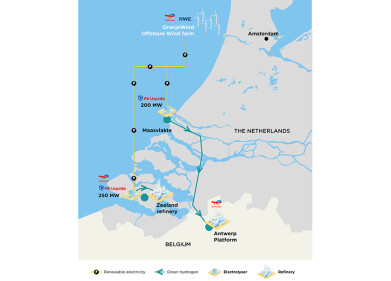Green energy
End of an era: Helsinki shuts down its last coal power plant
Apr 02 2025
The Salmisaari coal power plant has officially ceased operations, marking a significant step forward for Helsinki in its pursuit of carbon neutrality. This pivotal move eliminates coal use in the city, reducing Helsinki’s carbon dioxide emissions by an impressive 30% compared to the previous year. The closure not only represents a milestone for Helsinki but also signals the effective end of coal-fired power generation across Finland.
Helsinki has set an ambitious goal to achieve carbon neutrality by 2030, twenty years ahead of the European Union’s target. Achieving this requires a dramatic shift away from fossil fuels in energy production. The first major step in this transition came two years ago when Helen Ltd, the city-owned energy utility, closed the Hanasaari B power plant. Now, with Salmisaari’s closure, Helsinki has removed its last remaining coal power plant.
“This is a historic moment for Helsinki, Finland, and indeed the entire world,” says Juhana Vartiainen, Mayor of Helsinki. “Cities around the globe are playing a leading role in combating climate change, and Helsinki is proud to be at the forefront. The closure of these coal plants showcases our unwavering commitment to a sustainable future, both on a national and global scale.”
The Salmisaari closure contributes to a substantial 30% reduction in Helsinki’s emissions. Just two years ago, coal accounted for 64% of Helen’s district heating production. With the closure of both the Hanasaari and Salmisaari plants, the city’s carbon emissions will drop by an impressive 43%. On a national level, these actions will reduce Finland's total carbon dioxide emissions by 5%.
Transitioning to Clean Energy
Helsinki’s energy production has undergone a transformation, leaving fossil fuels behind. Through investments in carbon-neutral technologies, including Europe’s largest electric boiler and the world’s largest heat pump, Helen has successfully transitioned away from coal. The city’s future energy production will rely on a mix of electrified systems, including heat pumps powered by waste and environmental heat, electric boilers, energy storage, and sustainably produced bioenergy. Helen will also source electricity from renewable sources such as wind, nuclear, hydro, and solar power.
“Our progress towards carbon neutrality by 2030 has been especially remarkable in terms of heating and electricity,” says Anni Sinnemäki, Deputy Mayor of Helsinki. “Shutting down the Salmisaari coal power plant is a critical step, but our work doesn’t end here. Our goal is to achieve net-zero emissions by 2040, and beyond that, we will strive for carbon negativity.”
Hydrogen: A Future of Clean Energy and Innovation
As Helsinki diversifies its energy mix, hydrogen is emerging as a key player in the clean energy landscape. The city is investing heavily in hydrogen technologies, with one of its flagship projects being the Helen 3H2 – Helsinki Hydrogen Hub. This initiative aims to begin hydrogen production at a new facility in 2026. The potential of hydrogen extends beyond environmental impact—it also presents new business opportunities, especially for international companies.
Finland’s strengths in the hydrogen sector stem from its reliable and clean electricity system, a tech-driven society, abundant clean water and biogenic CO2, and strong potential for utilising by-products of hydrogen production.
With these advancements, Helsinki is poised to continue its leadership in sustainable energy, not just for the city, but as a model for the world.
Events
May 18 2025 Algiers, Algeria
23rd International Water Management Exhibition
May 20 2025 Prague, Czech Republic
Jun 17 2025 Guangzhou, China
Singapore International Water Week Spotlight 2025
Jun 23 2025 Singapore
Jun 25 2025 Sao Paulo, Brasil














